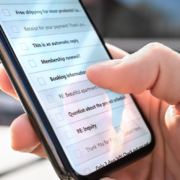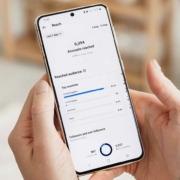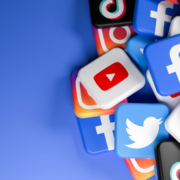Inbound vs Outbound Marketing: Know When (and How) to Use Each
Inbound, outbound, all around you hear these terms, but what exactly do they mean? What’s the difference between inbound vs. outbound marketing? And how does knowing all this marketing jargon help you reach your potential customers?
We get it; it can be challenging to keep up with different marketing techniques. But – and we hate to break this to you, bud – it’s essential if you want to build brand awareness and boost your lead generation.
Don’t worry though, learning the difference between these marketing approaches doesn’t have to be too painful, we promise.
What Is Outbound Marketing?
Outbound is the old-school advertising methodology where sales teams push their marketing content out into the real world in the hopes of getting it in front of their target audience. Typically these are traditional marketing tactics, but there are also digital marketing tactics as well.
Examples of Outbound Marketing
You see outbound marketing everywhere you look – and once you know what they are, outbound tactics are pretty easy to spot compared to inbound.
Common Outbound Marketing Efforts:
-
-
- Billboards
- TV Ads
- Direct Mail
- Cold Email Outreach
- Telemarketing and Cold Calling
- Pay-Per-Click Social Media Ads
- Radio Ads
- Display Ads
- Trade Shows
-
Benefits of Outbound Marketing
Just because it’s old, doesn’t mean it’s not an effective marketing strategy. There are still a lot of benefits to using this marketing approach.
Huge Reach
Your message gets in front of more people – especially more people who have never interacted with your brand.
Get Results Faster
Inbound strategies take a while to get results, but with outbound marketing, your marketing content can be seen immediately.
Drawbacks of Outbound Marketing Campaigns
There are, of course, some drawbacks to outbound marketing.
It can be hard to target a specific audience, especially when it comes to traditional media like billboards and TV ads. You can hazard a guess about who might be driving those roads or watching those channels – but it’s just that, a guess. Pay-per-click ads and search ads do allow you to target specific audiences based on demographics such as interest and location, however.
The pricing tends to be a little higher per conversion (though it’s sometimes hard to tell when it comes to traditional media since it doesn’t provide the handy metrics that digital media does).
It also tends to get on people’s nerves. A lot of people hate ads so much that they will pay to get away from them — and even download sketchy ad blockers to keep them at bay. This left the advertising world in a little bit of a bind — strategies needed to evolve.
And the result of that evolution was – yup, you guessed it, inbound marketing.
What Is Inbound Marketing?
Inbound marketing is kind of like a honey trap. In an era where people are fleeing from traditional ads, sometimes the best thing you can do is lay out some sugar and wait for them to come to you.
That’s the basic idea behind the inbound marketing approach.
How does it work?
Well, you craft high-quality experiences and valuable content for your target audience so that they end up wandering right into your sales funnel.
Examples of Inbound Marketing Strategies
There are a few different tactics you can use to draw customers.
Content Marketing
One of the most effective inbound marketing strategies is content creation. Think blogs, white papers, case studies, and podcasts. These should be engaging and informative so they can attract the eye of the audience, but they’re also a great place to practice search engine optimization (SEO). But remember – never sacrifice crafting high-quality content by stuffing a bunch of nonsense keywords in it.
Helpful, relevant content that answers your target audience’s pain points is a great way to catch them at the top of the sales funnel and show them how and why your product is the perfect solution to their problems.
Personalized Email Marketing
Cold emails are outbound territory, but personalized emails that retarget your customers along their buyer’s journey are at the heart of inbound. We’re talking about follow-up emails that welcome your customers to your brand after they first engage, or provide helpful recommendations for how to use your product after they buy.
Just sold someone a blender? Why not shoot them a list of trendy new smoothie recipes a week later? Or you could suggest the perfect accessory to go along with it. Strategic email sequences can give your business a real boost. The more personalized and creative, the better conversion rates you get.
Worried it will take too much time? There are plenty of email marketing automation tools you can find through platforms like MailChimp and HubSpot.
Social Media Marketing
Interactive content is a great way to engage your audience and up your outreach. People love to feel like they’re a part of the conversation. Regular social media posts can help you build a dedicated customer base — and creating viral, shareable content helps you attract new eyes.
It’s important to make sure that your marketing content matches the platform, however. Viral trends are great for TikTok and Insta, but educational webinars will likely be more appropriate for LinkedIn.
Benefits of Inbound Marketing
Inbound marketing helps you defeat the ad blockers and gives your potential customers something of value. It can pack a lot of punch when done well. Some of the best benefits include:
Why Inbound Marketing?
-
-
- Improved Customer Relationships
- Higher Rates of Brand Awareness
- Loads of Quality Leads
- Lower Cost, Higher ROI
- Larger Reach
-
Drawbacks of Inbound Marketing
You have to be patient when it comes to using inbound marketing. It takes a minute to see your reach grow, and you have to put a lot of time into crafting the content. Sometimes, if you’re in a market that’s already dominated by some major players, it can be hard to get attention. But hard doesn’t mean impossible – and it certainly doesn’t mean you shouldn’t try!
Which Should You Use When?
The best answer is both. But if you had to pick one, it’s going to depend on your aim and your budget.
Inbound, overall, is cheaper. Again – it doesn’t show the immediate results that might come from outbound. But if you don’t have much of a marketing budget, you can still start generating some buzz around your brand this way. It’s also the better choice if you have an ecommerce store or your services are digital thanks to its wider reach.
Local businesses are more likely to benefit from outbound strategies such as billboards and local radio ads. Outbound is also the more appropriate route to take if you want to get word out quickly about a new product launch.
Digital Marketing Made Easy
Now you know the difference between inbound and outbound marketing – go forth and crush it.
What’s that? Still feeling a little nervous about wading into the digital sea? Not sure how to craft a good landing page or make a convincing infographic? It can be a lot to handle.
You don’t have to do it yourself. We here at Lift Marketing have a staff of digital marketing gurus who can give you an assist. Inbound, outbound, we’re your all-around marketing masters. Reach out today, and see your conversion rates skyrocket tomorrow.












